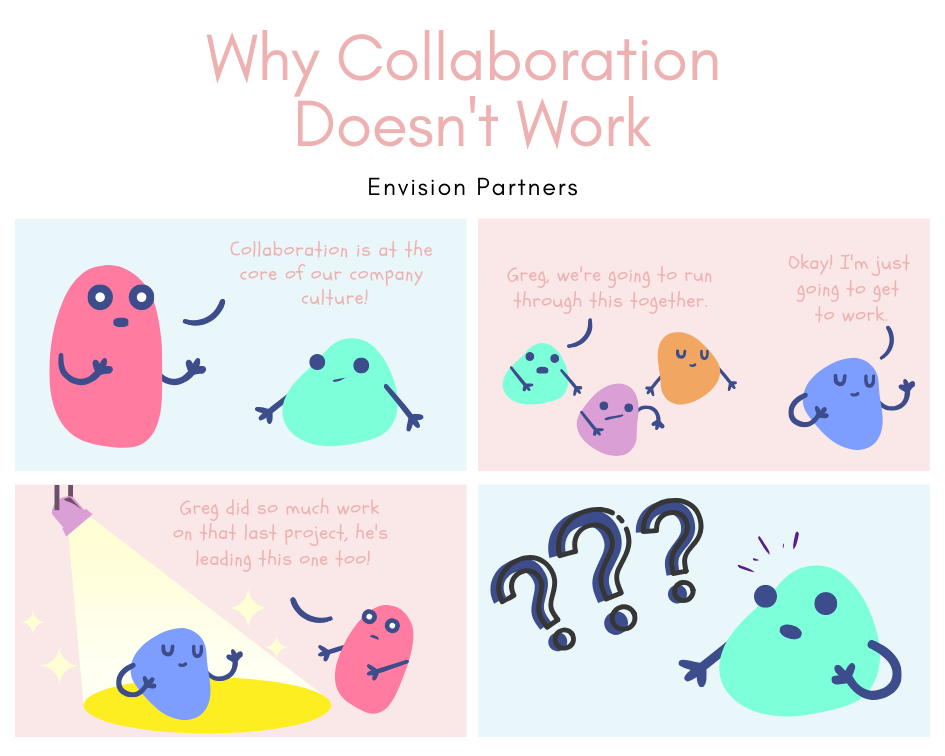Jumping Jack- What to do when a team member goes over your head
Jack’s supervisor is Ali. Jack’s team includes Jan, Melanie and Sandy. Jack has been in this situation before when a team member went around him to talk to his boss. Maybe you recognize the same emotions that Jack did. Jack felt left out of the conversation and he was worried that he would look bad to his boss. However, Jack has learned from his past experiences, and this time he went about things a little differently.
This week after a tough strategy meeting Sandy, the newest team member, went directly to Ali with an idea for which she did not get much air time in the meeting. Jack saw Sandy and Ali talking, but he didn’t learn what it was about until Ali asked him to look further into this idea that Sandy had shared.
Past experiences have told Jack that there are a number of possible motivations for Sandy to have gone directly to Ali.
- She could be looking for a different answer than the one she got in the meeting;
- She could be wanting to express her authority and stretch her wings;
- She could be trying to spite Jack for a past action. He honestly didn’t believe that;
- Sandy could be conflict averse and doesn’t want to go directly to Jack;
- Sandy may not know any better given her new employment in his group.
Jack didn’t know the exact reason, but he also has learned that making snap judgements is not going to help the situation. He needed to learn more by talking to his boss, Ali, or to Sandy. In this case, Ali had come to him. It was heads up of Jack to not react angrily or be surprised when he heard about the content of the conversation between Ali and Sandy.
Jack needed to talk with Sandy. What should be Jack’s intention in this situation? What would be your intention? The intention should be to work on the relationship—to restore lost trust and to develop a way forward. The solution will depend upon what is learned in that conversation, so Jack needs to go in with an open mind.
In this critical conversation, it is important for Jack to say “This is what I know/saw/heard”, and “This is how it makes me feel”. While this behavior may make Jack (or you) angry or feel betrayed, it is important to note that these words would suggest to Sandy that Jack has already interpreted her intentions–and Sandy would respond accordingly. Instead, he stated chose less inflammatory language, perhaps by explaining why these actions could make him feel angry or betrayed. This worked for Jack, and in return, she was willing and able to explain why she went directly to Ali.
Given the calmer approach to this potential breech of protocol, Jack and Sandy were able to work together on a solution. Being involved in the solution, Sandy was more likely to follow through on the new way of doing things. Jack was also more open to the idea that this incident was partly his fault. Perhaps Jack was not open enough to Sandy’s ideas or he was not clear about his priorities in the strategy meeting. In this meeting too, Jack and Sandy talked about the appropriate lines of communication in a non-threatening and understanding way.
Finally, Jack knew that it was important to talk with his supervisor, Ali. This important conversation:
- establishes Jack’s leadership authority by indicating that he was aware of this situation with Sandy;
- demonstrates that Jack has the ability to have difficult conversations;
- builds trust between Jack and Ali;
- helps prevent future occurrences by (re)establishing the rules for communication.
Like his previous conversation, during the conversation with his boss Jack needs to say “This is what I know/saws/heard” and “This is how it made me feel”. Like Sandy, there are probably a number of reasons why Ali agreed to have this conversation with Sandy. It’s important to talk about what these might be; to listen and to learn. With that information, Jack and Ali need to work out a communication strategy when a team member goes around Jack in the future. For example, Ali, might first ask if the employee has spoken to Jack.
Being the manager in the middle is not an easy place to be. In that role, Jack needs to manage relationships both down and up in the reporting structure.











